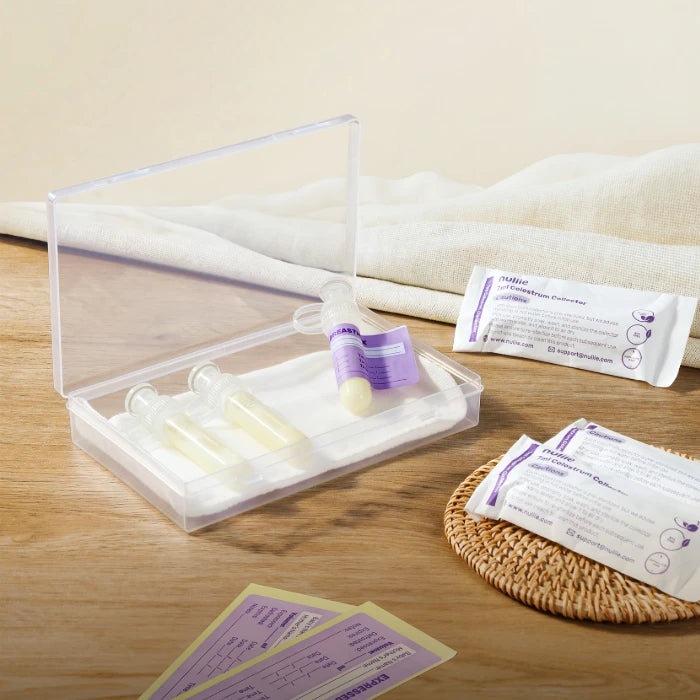Explore essential tips for using and storing breast milk effectively. Learn how breast milk storage bags can help manage your feeding schedule and keep milk fresh for your baby, even when you're away.
Newly given birth mothers feel so challenged in traveling to another place because of having to leave their babies at home. Their babies are still dependent on them and need to be breastfed. How is it possible to still breastfeed the baby even if the mother is away?
Breast milk storage bags are designed to free up some space in your bottles. You can store the milk somewhere else for later use. These are different from ordinary storage bags for foods. Breast milk bags are thicker. It’s BPA-free and FDA-approved to store breast milk.
Pumping is a part of the breastfeeding journey. Because of these breast milk storage bags, your hard work of pumping milk doesn’t go to waste. Milk should always be fresh for your baby until they need it again soon.
Here are tips on how to properly use and store precious breast milk. Read each storage tip carefully and practice it at home.

In pumping your milk, either directly pump it on the storage bag or inside the bottle first. Then, you can transfer it to the storage bag. The first one is a time-saver. The latter helps you measure how much milk you’ve pumped.
In case you’re having a hard time breastfeeding directly, make sure to pump by the time baby wants to eat. It’s a big help for you to continue making milk.
Always keep in mind to wash your hands with soap and clean water before pumping. You can also use alcohol-based hand sanitizer. Ensure that it’s at least 60% alcohol.
When you’re pumping, keep the area clean. That goes to your pumping parts and bottles as well. Prepare your breast milk storage bags. It’s not necessary to wash your breasts and nipples before pumping.
Sometimes, the milk doesn’t come out easily. Here are a few things you can do to let it flow:
- Begin with your mind. Think about your baby and how much you love him or her. You can get a blanket or clothing with his or her scent on it.
- Damp your breasts with a warm, moist cloth.
- Massage your breasts gently. Then, gently rub your nipples.
- Think of your milk flowing down. You must visualize it to help the whole process.
- Just sit quietly. Keep yourself relaxed while pumping for milk.

Sealing and Storing The Pumped Milk
Once the breast milk storage bag is filled, you have to keep it safe and store it. Make sure that the bottom is flat. Free up some space by pushing the air out from the bag. This is to prevent bubbles from forming. Seal it tightly to avoid the cause of any leaks.
To be safe, you need to label your breast milk storage bags. Mark the bag with the date and number of ounces. You can use a permanent marker or have some customized stickers in labeling your storage bags. Then, you can place it inside the freezer and lay it flat.
Safely Thawing Of The Milk
Once it’s time to feed the baby, make sure to use the oldest breast milk first. This is a famous and most used asset-management method that you can practice in your breast milk storage management. It’s called FIFO or “first-in, first-out”.
Store the pumped milk in the freezer. If you want to use it the next day, make sure it’s placed in the frozen at least overnight. Then, it can be proceeded to thawing the next day.
From the freezer, place the breast milk storage bag down the refrigerator. If you want it to be faster, you can thaw it in a bowl using warm running water.
Do not thaw it to room temperature. Transfer the milk to the bottle. Use a warmer bottle to ensure no harmful bacteria is present.
Use the thawed breast milk within 24 hours. Start counting from the hour it’s thawed inside the refrigerator.
Never thaw the breast milk in a microwave oven because it can cause a burn on your baby’s mouth. Do not refreeze the breast milk once thawed. In case not all of the breast milk is used, dispose of it.
Getting Rid Of The Breast Milk Storage Bag
Breast milk storage bags are meant to be thrown away once done using. They are naturally disposable. Don’t reuse them. It’s unsafe for the baby. You don’t want further problems.
Usually, breast milk bags come in 25s, 50s, and 100s quantities. There’s no need to worry about disposing of every after using. There’s an ample supply of storage bags for your future breast milk.
When Does The Breast Milk Bag Expire?
To clarify everything, breast milk storage bags don’t expire because of the material used in making them. However, storing breast milk only lasts for 4 months to 6 months. They must be thawed in the refrigerator within 24 hours. It’s discouraged to refreeze the milk once defrosted.
How Many Bags Needed To Use?
In cases like going out for a trip without your baby, prepare to pump milk. Bringing a breast milk storage bag is a very practical thing to do. How do you know the number of breast milk storage bags to bring?
First, first keep in mind the number of ounces you’ll pump per day. One can supply an average of 30 ounces of milk per day. This is equivalent to at least 6 bags.
When your storage bags get dirty, bring at least 4 more bags as extras. In this case, you don’t have to think about looking for breast milk bags from stores during the travel. Always think of bringing extras when traveling.
Sanitizing Milk Pump
Wash properly the pump and other feeding parts after using them. Use a clean soap and water.
Do not wash them directly on the sink because of a lot of germs present. It’s already been contaminated for some time. You don’t want your baby to get infected just because of improper hygiene practices.
Rinse everything well under running water if possible. Clean with a dishtowel or paper towel to air dry. Always use clean hands in storing dry items.
Additionally, sanity the feeding items daily. Here are the methods you can follow:
1. Clean the dishwasher with hot water. Do not use cold water because it will not kill the bacteria. Then, sanitize the space.
2. Boil water for 5 minutes once you’re done cleaning.
3. Steam the pump in a microwave according to the manufacturer’s direction.
Breast Milk’s Changes In Color And Smell When Thawed
Have you noticed that the color and smell of the stored breast milk change when thawed? Don’t worry about a thing because it’s completely normal.
By the time women produce breast milk, the enzyme called lipase is high. These enzymes are responsible for digesting the fat content of breast milk.
It affects the smell and taste of breast milk, either fresh or frozen. Usually, it smells or tastes metallic. Some describe it as soapy.
Women don’t realize if breast milk is high in lipase unless being frozen. It takes several hours or a day for changes to take effect. Have you also tried tasting your own breast milk?
In case your baby doesn’t want to drink your breast milk, it’s advisable to talk to your pediatrician. Listen carefully and find out what helps neutralizes the enzyme. Surely, it will lessen the smell that might have caused your baby not to take it.
Checking If Breast Milk Has Gone Bad
Normally, your milk has gone bad once it smells rancid or sour. When you make face upon smelling the milk, that’s a sign that it’s no longer good for your baby to take.
You will also identify it when the milk separates naturally after you pump. Notice that the fat rises on top. Gently swirl the bottle and see the effect. According to Campbell, the milk mixes back together if it’s still good.
Reheating Of Breast Milk
Breast milk is very precious and delicate. Not in your life should you waste even a drop of it. Breastfeeding moms who are very conscious of preserving their milk will cringe anytime it’s wasted.
Campbell said that some bacterial contamination occurs in the infant’s mouth once he or she starts drinking a bottle of milk. Reheating the milk is discouraged because of this. The bottle where the baby drinks are only good for an hour.
Thus, Campbell recommends mothers store milk in smaller breast milk bags or bottles. By the time you need to feed the baby, he or she will get a full portion. Then, you do not need to worry about any wasted breast milk.
Conclusion
Breast milk is considered the “golden liquid”. Breast milk storage bags are the best tool to manage your milk. It helps you save time and space in using and storing the milk.
They also help a lot during your travels as a mother who has newly given birth. You don’t have to worry about leaving your child at home because you can pump your milk and store it anytime. And, always prepare and bring extra breast milk storage bags.





Leave a comment
This site is protected by hCaptcha and the hCaptcha Privacy Policy and Terms of Service apply.